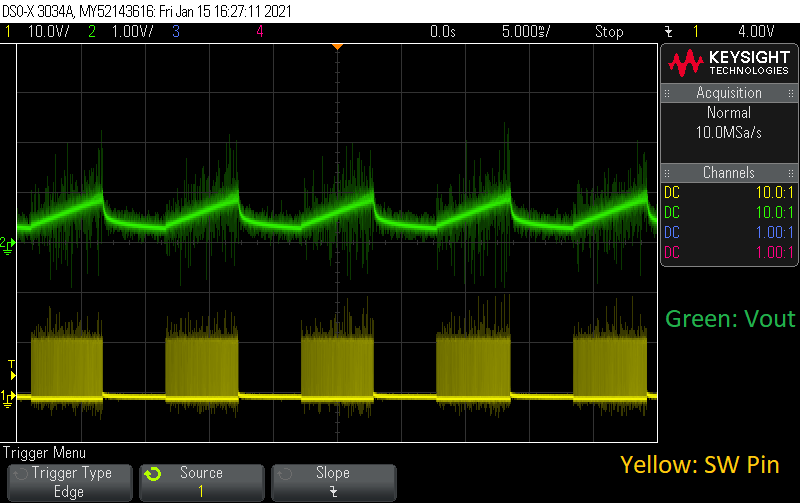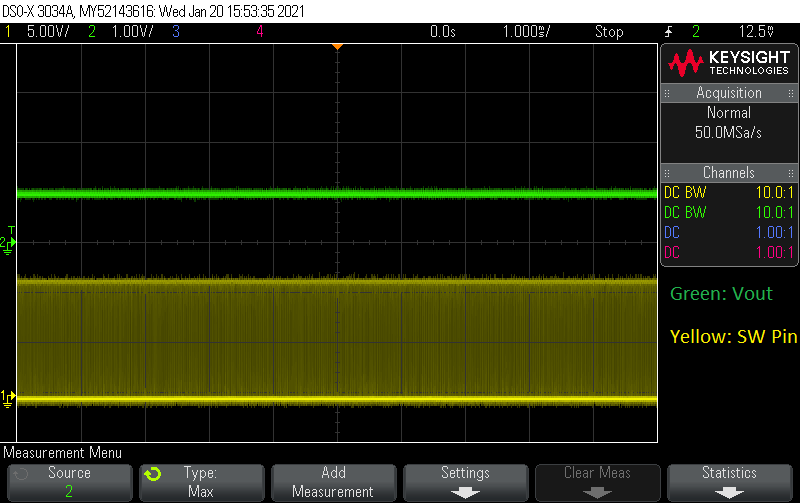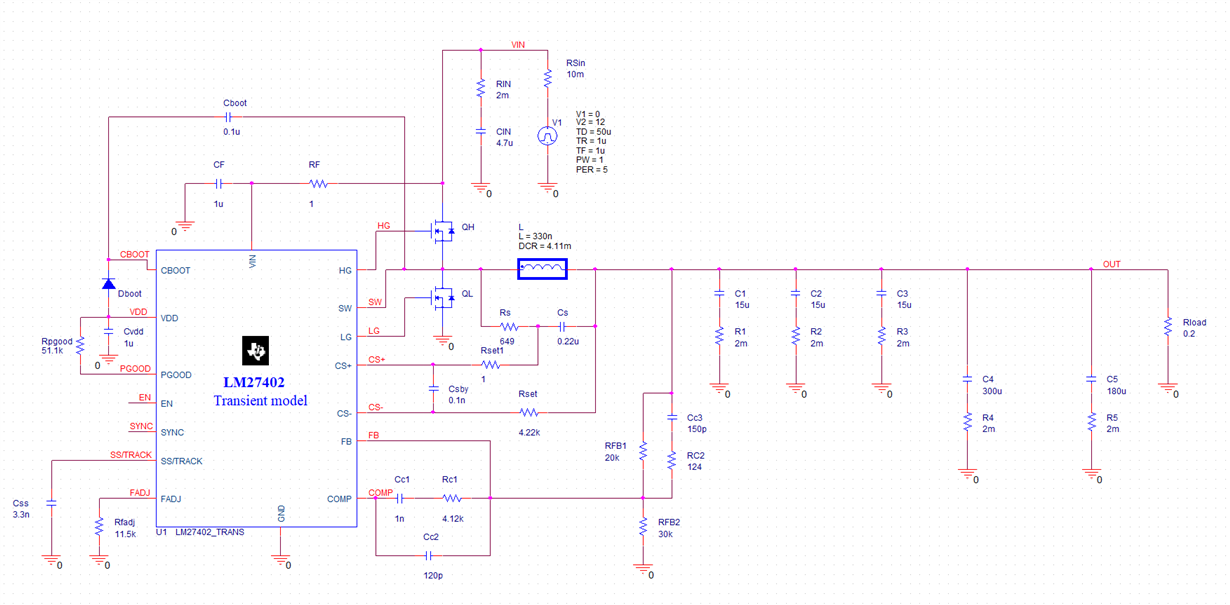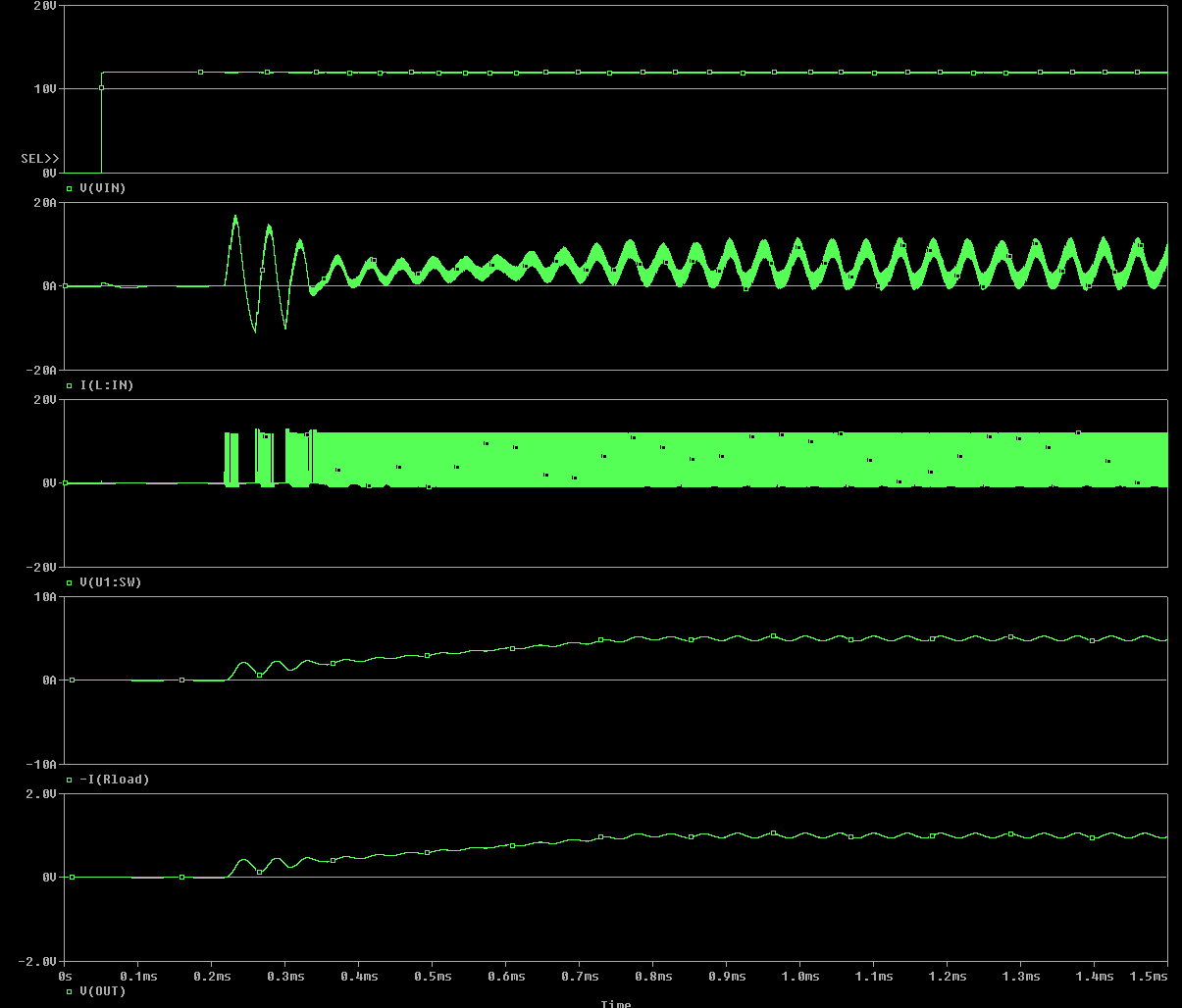Hi,
We are facing issue with LM27402 switching regulator for 1V @ 14A output from 12V input. During startup itself regulator is going into OCP hiccup mode and its continue in that. Final load to this regulator will be around 10A only.
We tried reducing the load by isolating some of the ICs at load, and still it is behaving same.
Tried changing soft start capacitor (C1500) to 1uF, even then issue persist. Please review schematic and let us know any changes required?
Attached below
1. Schematic section of 1V
Inductor part used is XAL6030-331MEB.
2. Regulator output waveform and SW pin waveform
Thanks,
Jijesh









